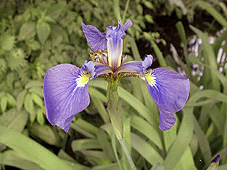
| adults over 16 years old | 500 Japanese Yen |
|---|---|
| children over 6 years old | 150 Japanese Yen |
| Address | 1842 Hanaishi, Nikko, Tochigi 321-1435, JAPAN |
|---|---|
| Tel | [81]-288-54-0206 |
| Fax | [81]-288-54-3178 |
Nikko Botanical Garden is about 3.5 km apart from Nikko Station (JR Nikko line) and Tobu Nikko Station (Tobu Nikko line). Take a bus at either station (Tobu Bus to Okuhosoo, Kiyotaki, Chuzenji, or Yumoto) and get off at "Nikko shokubutsuen." It takes two minutes to walk from the bus stop.

Nikko Botanical Garden is an institute for research and education of Graduate School of Science, University of Tokyo. The main activities of the Botanical Garden have centered on enriching the collections of temperate and alpine plants of Japan and adjacent regions for the purpose of botanical research and education. A total of 2,200 species (130 species of pteridophytes, 70 species of gymnosperms, and 2,000 species of angiosperms) are planted in the garden.

Nikko Botanical Garden was established in 1902 as an educational and research branch of the main Botanical Garden of the Faculty of Science, University of Tokyo ("Koishikawa Botanical Garden," at Tokyo), for the study of alpine plants. At that time, Nikko Botanical Garden was located near the famous Toshogu Shrine. The garden was moved to the present area in 1911. A part of garden of the "Tamozawa Goyotei", a villa of the imperial family, was donated to or purchased by the Botanical Garden in 1950, thereby enlarging the area to 106,980m2.
Nikko Botanical Garden is located at 36o45'N, 139o35'E, and 647m above sea level, so that the climate is considerably cooler than in Tokyo. The garden stand on a slope facing the Daiya River and situated on rolling terrain with streams and ponds.

Most of woody species in the Garden are indigenous to Japan. They were planted in their present site as early as the foundation of the Botanical Gardens and have now reached the size of natural state.
There are good collections of woody representatives of the Japanese temperate flora, including 22 of the 24 indigenous Japanese species of Acer, more than 10 species of Japanese Cerasus (Prunus ), and 80 species of evergreen and deciduous rhododendrons (species from abroad included).
Many herbaceous species are grown under the shade of the trees and at their margins. To maintain plants that need special surroundings, rockeries and bog gardens have been established.
About 100 species of Japanese alpine plants are grown in the rockeries gardens. Plants from abroad, such as the Himalayas and Korea, are also cultivated.
Aquatic plants such as Equisetum fluviatile are grown in the bog gardens. Parts of this area are provided artificial raised bogs with bog mosses where the characteristic bog plants are cultivated.